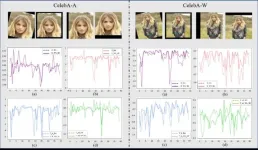(Press-News.org) Drugs developed to fight blood and other cancers could also help improve the efficiency of radiotherapy in the most commonly diagnosed low-grade brain tumour in adults, a new study has found.
Meningioma account for approximately 36% of all primary brain tumours. The majority are successfully treated by surgery, but some which can’t easily be accessed need to be treated with radiotherapy. That can cause significant side effects and radiation damage to the brain, while resistance to radiotherapy can also result in tumour growth.
A new study by researchers at the Brain Tumour Research Centre of Excellence at the University of Plymouth looked in detail at the effects of that radiation damage but also ways of mitigating it.
Using meningioma cells, researchers discovered that radiation-induced damage can lead to cells producing an increased quantity of the enzyme Histone deacetylase 6 (HDAC6), which has previously been shown to contribute to tumour growth.
However, by administering the HDAC6 inhibitor Cay10603 prior to radiotherapy, they were able to inhibit cellular growth – and increase cell death – in meningioma samples.
The study – published in the journal eBioMedicine – was led by Dr Juri Na and Professor Oliver Hanemann, and they say their findings represent a potential promising approach to improving the treatment outcomes of malignant meningioma.
The research also builds on extensive and ongoing work by the Centre of Excellence in Plymouth looking at the potential of already-approved medications to be repurposed as a way of helping brain tumour patients.
Dr Na, Senior Research Fellow and the study’s lead author, said: “Cay10603 has been developed to HDAC, a common target for some approved blood cancer drugs. But our study shows that when used alongside radiotherapy, the drug reduces tumour cell growth and increases tumour cell death. It means that this combination treatment will kill cancer cells more efficiently while avoiding serious side effects that could be caused by heavy radiation treatment, as we can administer a low dose of radiation along with Cay10603.”
Professor Hanemann, Director of the Brain Tumour Research Centre of Excellence at the University of Plymouth, added: “Pan-HDAC inhibitors have been approved by both US Food and Drug Administration and the European Medicines Agency, but Cay10603 is not currently licensed in the UK. And no HDAC inhibitors like it have been utilised in clinical settings. It means there are still steps to overcome before this treatment can begin to benefit patients directly, but this is certainly a positive development when you consider the lack of existing treatments available to meningioma patients.”
Brain Tumour Research funds sustainable research at dedicated centres in the UK. It also campaigns for the Government and larger cancer charities to invest more in research into brain tumours in order to speed up new treatments for patients and, ultimately, to find a cure. The charity is the driving force behind the call for a national annual spend of £35 million in order to improve survival rates and patient outcomes in line with other cancers such as breast cancer and leukaemia.
Dr Karen Noble, Director of Research, Policy and Innovation at Brain Tumour Research, said: “We are delighted to see this promising new approach by the team at our Centre of Excellence at the University of Plymouth. We need to keep funding this early-stage research because this is the only way we will find new and improved treatments. We hope this impressive work will lead to clinical trials for meningioma patients.”
The patient perspective
Katie Everett, 31, from Romsey in Hampshire, was diagnosed with a meningioma in July 2021 She has had two operations and six weeks of radiotherapy. Her most recent MRI scan, in February 2024, was stable with no sign of regrowth but she is now on thyroid and hormone medication.
She said: “This development is really exciting and it’s reassuring to know that there is something out there which could help people like me. When I was in hospital, I met a lady with multiple tumours on her brain who had to endure multiple rounds of radiotherapy. It would be lovely to know this will help people like her in the future.”
END
Blood cancer drug could make radiotherapy on brain tumours more effective
2024-07-10
ELSE PRESS RELEASES FROM THIS DATE:
Does air pollution affect lupus risk?
2024-07-10
New research published in Arthritis & Rheumatology indicates that chronic exposure to air pollutants may increase the risk of developing lupus, an autoimmune disease that affects multiple organs.
For the study, investigators analyzed data on 459,815 participants from the UK Biobank. A total of 399 lupus cases were identified during a median follow-up of 11.77 years. Air pollutant exposure was linked with a greater likelihood of developing lupus. Individuals with a high genetic risk and high air pollution exposure had the highest risk of developing ...
Can certain bacteria or fungi combat a plant pathogen that attacks common vetch?
2024-07-10
Anthracnose, a severe disease caused by the Colletotrichum spinaciae plant pathogen, often occurs in common vetch, a widely grown legume. Chemicals are not recommended for disease management because the plants are used as livestock feed. A new study published in Grassland Research reveals that treating common vetch with certain bacteria or fungi that promote plant growth may be effective for combating anthracnose.
Treating common vetch with these bacteria or fungi increased the activity of plant defense enzymes and promoted the presence of healthy bacteria that could keep Colletotrichum spinaciae at bay.
“The combined use of plant growth‐promoting rhizobacteria such as Bacillus ...
Can omega-3 fatty acid intake affect acne severity?
2024-07-10
In a study in the Journal of Cosmetic Dermatology that included 60 individuals with mild to moderate acne, following the Mediterranean diet and taking omega-3 fatty acid supplements led to significant reductions in inflammatory and non-inflammatory skin lesions, as well as improved quality of life.
Notably, 98.3% of participants had omega-3 fatty acid deficits at the start of the study. Acne severity lessened significantly in those who reached target omega-3 fatty acid levels during the study.
“Lifestyle interventions, including dietary recommendations, should ...
How did surge facilities impact the time to reunification for unaccompanied migrant children and their families?
2024-07-10
Unaccompanied children entering the United States without adult legal guardians and legal status account for a growing share of U.S. Border Patrol encounters along the southern border, with most fleeing extreme violence, poverty, and food insecurity. In response, emergency intake sites and influx care facilities (surge facilities) were used to promptly house unaccompanied children. A new analysis published in Economic Inquiry finds that the emergency shelters expedited the reunification of children with their families.
By analyzing data on unaccompanied minors encountered ...
Could new discovery help treat a rare and severe form of amyloidosis?
2024-07-10
In people with a rare condition called light chain amyloidosis, light chain proteins—which are a component of antibodies—mutate and build up in different organs. In new research published in The FEBS Journal, investigators have identified and characterized an antibody fragment that can bind to abnormal light chains to stabilize them and prevent their aggregation.
The findings could have an important clinical impact because the current prognosis for individuals with light chain amyloidosis is extremely poor, and current treatments, ...
We can’t distinguish wild coca plants from those grown to make cocaine
2024-07-10
A new paper in Molecular Biology and Evolution, published by Oxford University Press, indicates that while the United Nations Office on Drugs and Crime has collected annual data on areas of coca cultivation in South America for decades – to monitor the establishment of illegal plantations and associated deforestation – scientists can’t reliably distinguish between different types of coca plants. While identification often relies on leaf shape and size, this does not reflect differences between coca varieties grown for extracting the alkaloid cocaine (the active ingredient in the recreational drug), coca cultivated for traditional purposes, ...
Chronic allergic disorder EoE’s rising incidence in Japan confirmed by large-scale data analysis
2024-07-10
Osaka, Japan — In one of the first studies of its kind in Japan, Osaka Metropolitan University-led researchers uncovered the incidence and prevalence of the chronic allergic disorder eosinophilic esophagitis, or EoE.
EoE can cause difficulty in swallowing with tissue inflammation and fibrosis as eosinophils, a type of white blood cell, build up in the esophagus. EoE cases have been increasing in North America and Western Europe since the 1990s, but little has been known about the situation in Asia including Japan.
Dr. Akinari Sawada, Associate Professor Fumio Tanaka, and Professor Yasuhiro Fujiwara of OMU’s Graduate School of Medicine and colleagues analyzed a ...
Does living in America’s wealthiest communities make you safer?
2024-07-10
HERNDON, Va., July 10, 2024 -- One of the privileges the wealthiest Americans enjoy is living wherever they want. But new research published in Risk Analysis suggests they should be cautious when choosing their Shangri-La.
In their nationwide analysis, Rutgers University geographers Michael Greenberg and Dona Schneider compared the concentration of hazards and associated risks impacting the richest and poorest counties and the richest and poorest municipalities in all 50 states (200 locations).
When ...
Spectacular auroras are caused by head-on blows to Earth’s magnetic field that could damage critical infrastructure
2024-07-10
Auroras have inspired myths and portents for millennia — but only now, with modern technology dependent on electricity, are we appreciating their true power. The same forces which cause auroras also cause currents that can damage infrastructure which conducts electricity, like pipelines. Now scientists writing in Frontiers in Astronomy and Space Sciences have demonstrated that the impact angle of interplanetary shocks is key to the currents’ strength, offering an opportunity to forecast dangerous shocks and shield critical infrastructure.
“Auroras and geomagnetically induced currents are ...
An approach for robust facial attribute classification
2024-07-10
Face attribute classification (FAC) is a high-profile problem in biometric verification and face retrieval. Although recent research has been devoted to extracting more delicate image attribute features and exploiting the inter-attribute correlations, significant challenges still remain.
To solve the problems, a research team led by Na LIU published their new research on 15 June 2024 in Frontiers of Computer Science co-published by Higher Education Press and Springer Nature.
The team proposed a scattering-based hybrid block, termed WS-SE, to incorporate frequency-domain (WST) and image-domain (CNN) features in a channel attention manner. Compared with CNN, WS-SE achieved ...



